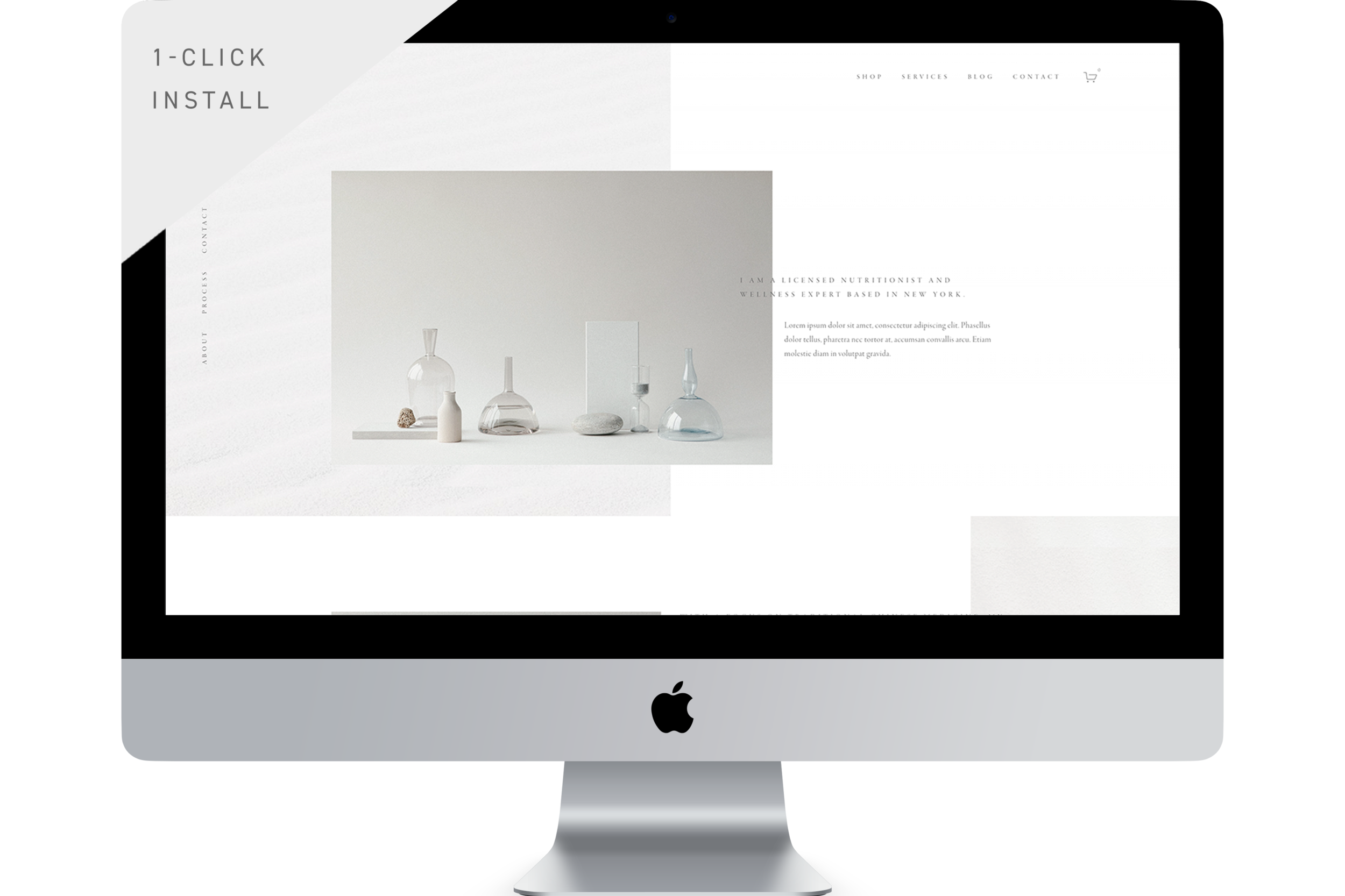How To Write Copy For Your Business: The Ultimate Guide
This is a beginner’s guide on how to write smart and effective website copy for your business.
Writing copy is difficult. On the one hand, you want thoughtful and strategically placed keywords that convert to sales. On the other, you want relatable and authentic copy that resonates with your audience.
In this guide, we offer tips on how to write marketing copy that is:
Optimized for sales
SEO-friendly
Easy to understand
100% custom
If you are struggling to write copy for your business’ website or looking for ways to rework your existing copy, then this guide is for you.
Let’s get started.
Table of Contents
Chapter 1
Sales Optimization
Chapter 2
Search Engine Optimization (SEO)
Chapter 3
Clear Communication
Chapter 4
Brand Authenticity
Chapter 1: Sales Optimization
In this chapter, we will introduce four tips on how to optimize your website copy for increased sales and business growth. By the end of this chapter, you will have a basic understanding of how to compose clear and concise copy that resonates with your audience.
Identify your audience.
To write effective copy, you must first identify your audience. If you haven’t already, outline your Ideal Customer Avatar, (ICA) or a profile of your ideal customer. Give your customer a name. Get down to the specifics: what is this individual’s age, location, occupation, hobbies, long-term goals, and social interests? What pain points do they encounter regularly? The first step to writing good copy is knowing exactly who your audience is.
Put the reader first.
Many new business owners – solopreneurs, especially – make the mistake of assuming that their audience is interested in them. They may ramble on about their upbringing, aspirations and what inspired them to start their business. While divulging personal details can add a human dimension to your business, you must remember that ultimately, customers are primarily interested in how your business can add value to their lives. Center your customer by tapping into their interests, hopes and fears – not your own.
Avoid over-explaining.
Assume that every one of your readers is skimming through your copy. Keep your sentences clear and concise. Choose specific descriptions over broad and abstract sentiments. Avoid flowery or esoteric language. If you find yourself stringing together multiple adjectives, cut it down to one or two. Typically, customers read marketing copy to see if the business can serve their needs, not to be taken on an existential journey – so get straight to the point.
Have a specific CTA.
Good copy inspires action. To inspire the ideal action (i.e. making a purchase or subscribing to your content), you need to have a clear call-to-action (CTA). A good CTA is specific, but not pushy. Let’s say you want your reader to buy your perfume products. Instead of saying “buy this perfume!” – a broad and forceful statement – you can say, “browse our shop to find your signature scent” – a specific and much more nuanced statement.
Chapter 2: Search Engine Optimization (SEO)
In this chapter, we will outline four steps to make your copy SEO-friendly. By the end of this chapter, you will know how to identify and implement targeted keywords in your website for increased visibility on the web.
Research keywords.
Now that you’ve identified your ICA in the previous step, think about what this ideal customer would be entering into a Google search query. If you sell plants and your ideal customer is an urban dweller who loves plants, they may search “plants small apartments”. These are now your targeted keywords and should be included in your website copy. Use SEO tools like Ahrefs to research what keywords your customers are searching for and what keywords your competitors are using.
Do a SEO audit.
Once you’ve included your keywords in your website copy, you need to audit your website and see how your newly added keywords are affecting your SEO ranking. There are plenty of service providers out there – free and paid – that help you accomplish this. For starters, Hubspot’s Website Grader is a free service that audits your SEO and overall website performance. We also recommend Google’s Webmasters Tool, which helps you get an accurate picture of what a Google bot would see when they crawl your site.
Use your keywords for image SEO.
Good news! Your ideal customer can also find you through image search queries. Include your keywords in your image titles, file names and alt tags to improve your website’s visibility for specific search queries. However, be sure that your keywords are relevant to the image. Using the plant store example once again, you can include your keywords “plants” and “small apartments” in your image of a succulent – but probably not the headshot in your About page.
Write quality content around your keywords.
The reason why many websites have blogs is because Google favors websites with regularly updated content. While it may be easier to relegate blogging to occasional company updates, those who are strategic with SEO use this space to attract more search queries. Writing helpful and informative articles revolving around your keywords not only helps your website’s visibility, but also helps establish trust between you and your site visitors.
Chapter 3: Clear Communication
In this chapter, we will offer tips on how to write marketing copy that is easy to understand. By the end of this chapter, you will have an idea of appropriate copy lengths and how to communicate your mission statement.
Keep it short.
While ideal copy lengths depend on factors like content type and site layout, it’s a good idea to assume that site visitors are unlikely to stay focused on a singular topic for more than 100 words. If the copy on a page exceeds 100 words, section off the copy into subheadings to signal that you are moving on to another topic. Make it easy for site visitors to skim through your content and quickly find topics that are relevant to their specific needs.
Be specific.
Many new business owners make the mistake of relying on broad and abstract statements to bolster their mission statements. Going back to our plant store example, they may say, “my mission is to make the world a better place through plants” – which is a lovely sentiment. But it is not as effective as the statement, “my mission is to help urban dwellers discover the beauty of plants, even in small living spaces,” which addresses a specific customer and includes some vital SEO keywords.
Chapter 4: Brand Authenticity
We will conclude this guide with some tips on how to write copy that feels 100% custom to your brand. By the end of this chapter, you will know how to write compelling original content and connect with your ideal customer in a meaningful way.
Find the right tone.
Now that you’ve done your research on your ICA and their search queries, think about how they would speak. Are they friendly and casual in their communication, or do they prefer more formal and stoic settings? Do they value relatability or credibility in a brand? Develop a copy style guide by analyzing the way your ICA would speak and outlining rules around specific word patterns. The goal here is to mirror your ICA so that they feel like they are being understood on a personal level.
Appeal to your niche.
Hopefully, your brand taps into a notable gap in the market. Don’t be afraid to write directly to your niche audience and address their specific needs. Going back to our previous example, what makes this seller unique is that they sell plants to urban dwellers who may not otherwise have the space to enjoy plants. The store may specialize in plants that require little light or plant accessories that fit in a small apartment. “No space? No problem” will resonate deeper with an urban plant lover than a generic statement like, “Plants are beautiful.”
Have a singular purpose.
Would you trust a doctor who has multiple passions or one who has a singular purpose to help others in need? The same principle can be applied to businesses. Companies with a singular purpose garner more trust and come off as authentic. Of course, businesses can and often do have multiple objectives and dimensions – but it is important to be able to distill these elements into one broad and all-encompassing goal, whether it is to be a leader in a specific industry or enrich the lives of a specific community.
Was this helpful?
Ready to apply what you’ve learned today? Here at The Denizen Co., we offer professional website copy templates for emerging entrepreneurs:















